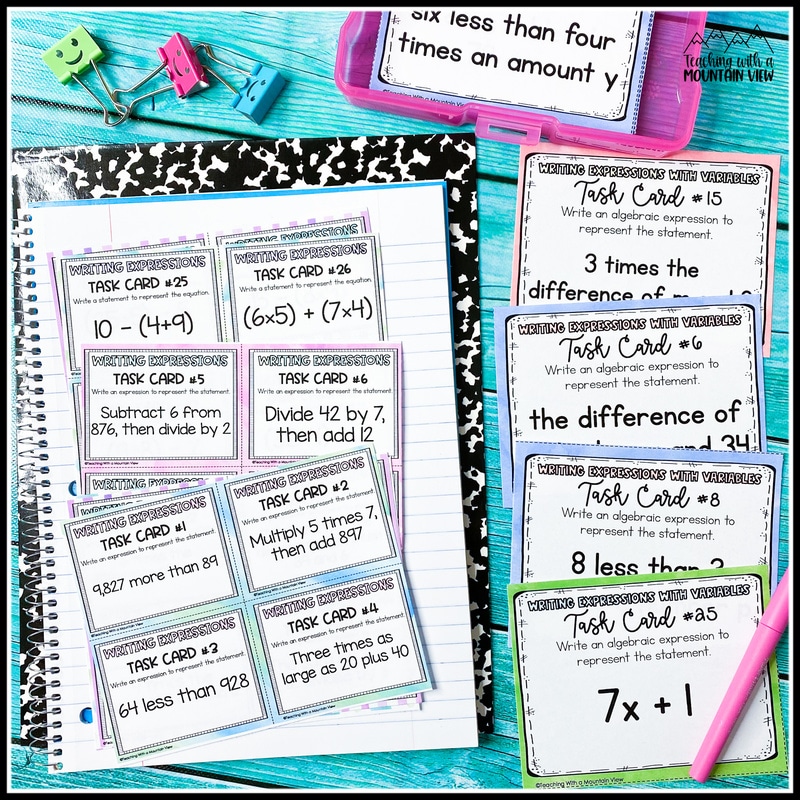Interpreting Expressions in Upper Elementary
By Mary Montero
Share This Post:
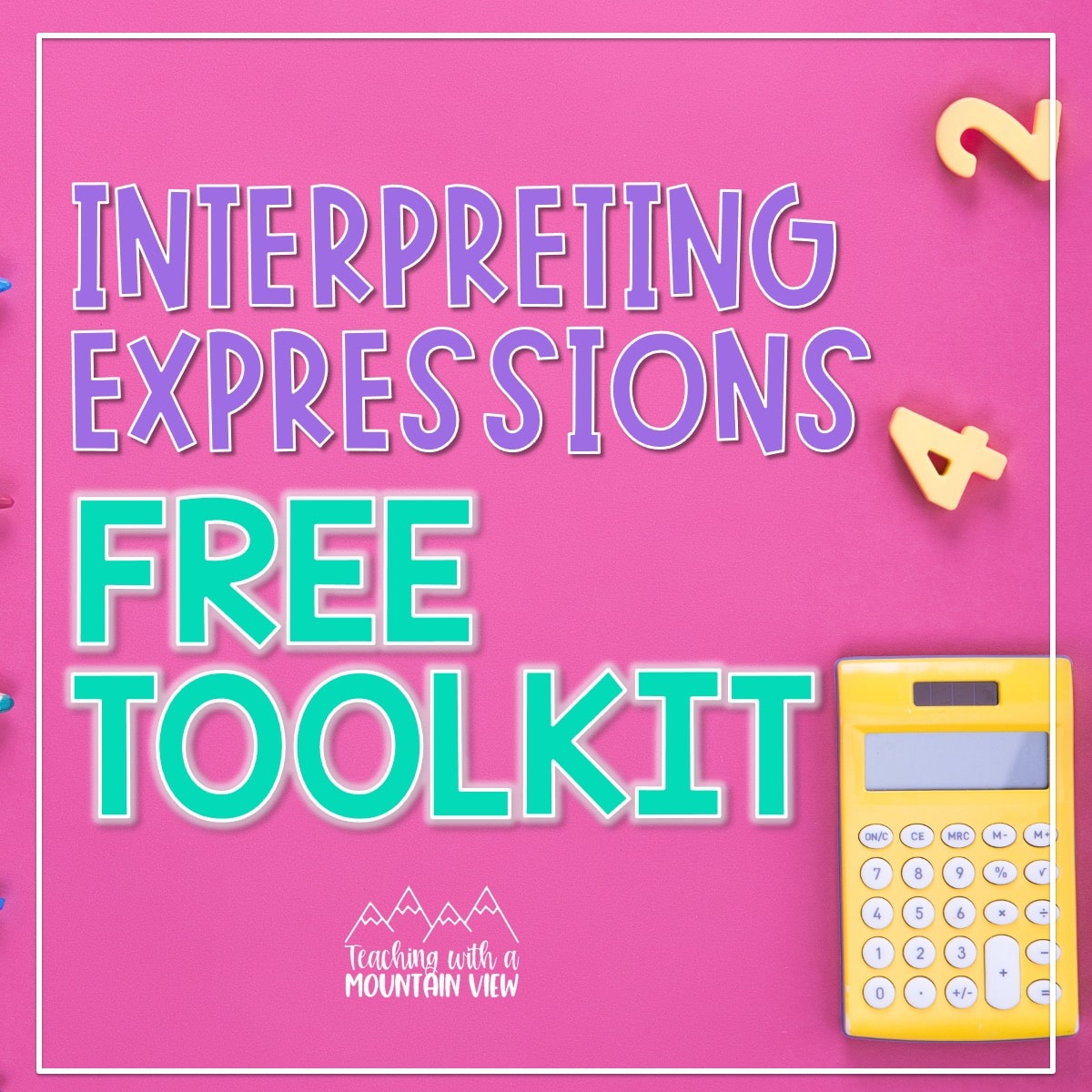
Hey there! I am so happy to be here with you today to chat math, specifically the standard that asks students to write simple expressions that record calculations with numbers, and interpret numerical expressions without evaluating them. I have a blog post about the properties of operations and algebraic expressions here if you’re interested in learning more before we dive into interpreting expressions!
I absolutely love looking at math like a puzzle to be solved, and that’s exactly what students feel like we are asking them to do when we ask them to interpret expressions!
Now, the reality is that students have been writing expressions for the entirety of their school career. What they haven’t been doing is using a lot of the specific vocabulary that is required of them when interpreting and writing expressions.
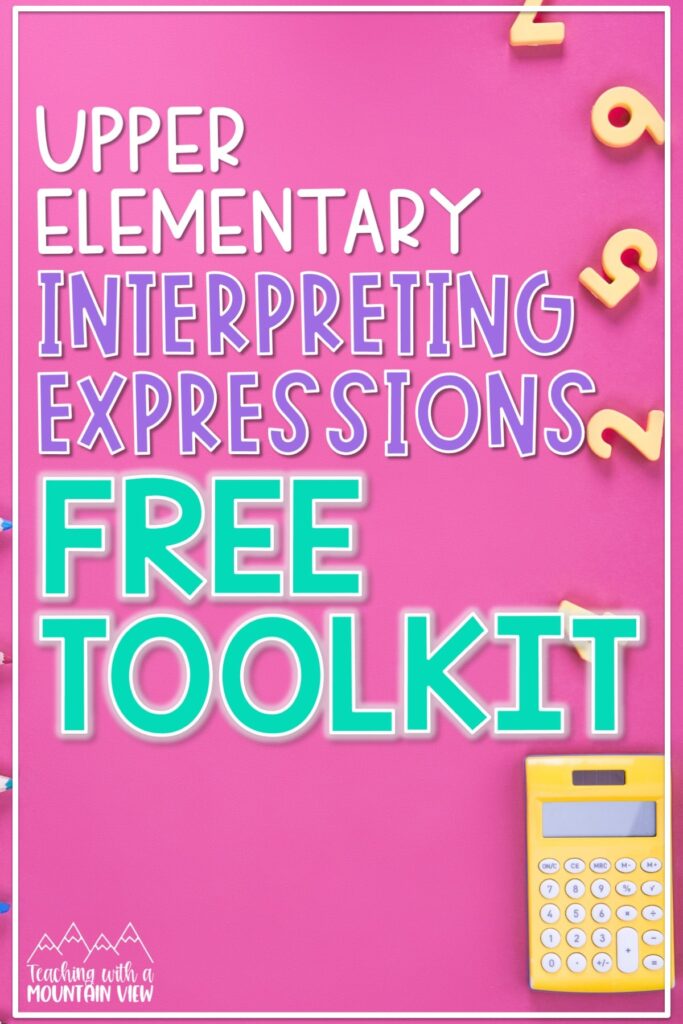
Interpreting Expressions Anchor Chart
I am a huge proponent of creating anchor charts together as a class because they truly become anchors for learning. I’ll often have students create a similar chart in their notebooks as we create the anchor chart, or they can do it after we create the anchor chart if you don’t feel like you’re able to truly keep their attention and engagement. For this purpose, we are actually going to create a big waterfall booklet with this information, so I don’t have students write it down right away.
I never, ever just post posters. Ever. I may have some elements of my anchor chart ready to go, but I won’t have everything filled in. That’s for us to do together! For easy readability, I’m using a digital anchor chart here, but I really want to emphasize how important it is to create this with your students. You can definitely recreate this on a large piece of paper and then have students use this one in their notebooks as well.

Before we can even begin this lesson, and for the forefront of our anchor chart, we will start by discussing the difference between an expression and an equation. I have an anchor chart for that, too, but we can simplify it for our expression-specific anchor chart. Students have to know what they are working with before we can teach it to them, and I’m a stickler for using excellent, precise math vocabulary.
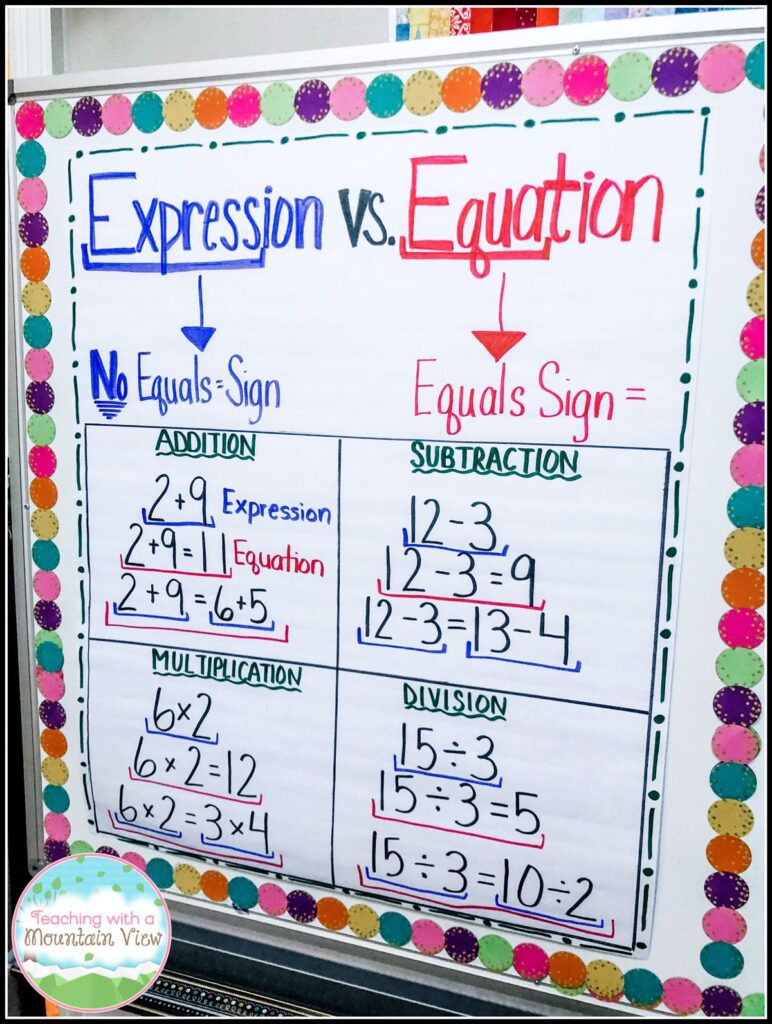
Depending on where you are with your students and their comfort level, this is a good time to point out that there are both numerical expressions and algebraic expressions. Algebraic expressions have at least one variable. Numerical expressions simply have numbers.
Now that we have reviewed expressions versus equations, we review the order of operations and chat about parentheses as well and how important they are going to be as we read and interpret expressions. It is crucial that your students have a solid understanding of the order of operations before going any deeper with this concept!
Reading Expressions and Equations
After this, I have students read our sample expressions and equations, ie. 4 plus 5. Then I challenge them to read it another way…. And another… and another…. And another…. For example: 4 + 5 is 4 increased by 5 or the sum of 4 and 5.
Each time they successfully come up with a different way to read it, I include whatever verbiage they used off to the side of the whiteboard because we will come back to it later.
Later, once they’ve reached frustration point (oops!) with coming up with different ways to word the expressions, we start chatting about keywords. We come up with a huge list of keywords to identify for writing in word form (decreased by, doubled, etc.).
Quick side note: I know there is a lot of debate about the research that says these charts don’t truly help our students determine which operation to use, specifically in regards to problem-solving. However, I’ve found them to be absolutely crucial as I’m introducing the idea of written expressions.
Interpreting and Reading Numerical Expressions
The two main aspects of interpreting and reading numerical expressions are:
1. Determining which operation or operations is being used and
2. In what order are they being used?
You’ll notice the sticky notes down at the bottom of the anchor chart template. When you create this with students, make it an interactive spot by putting numbers on sticky notes and generating new problems to practice reading and creating expressions.
Waterfall Booklet
Waterfall booklets are such a great way to incorporate a ton of information, practice, etc. into one notetaking vessel. We take several days to go through this together and make sure it has all of the information we need. I start by having them copy down the “What is an expression vs. equation” part of our anchor chart. Then we copy down all of our keywords in our waterfall booklet. Then we go through each and every operation.
On the top of the tab, we put an example of at least one word problem (I included a sample list of questions for you!) and write an expression for it.
On the main tab, I split it into two sections, where we write the numerical expression and the word phrase. There is something that kids just love about these booklets, and they become an excellent reference resource once we are done with them.
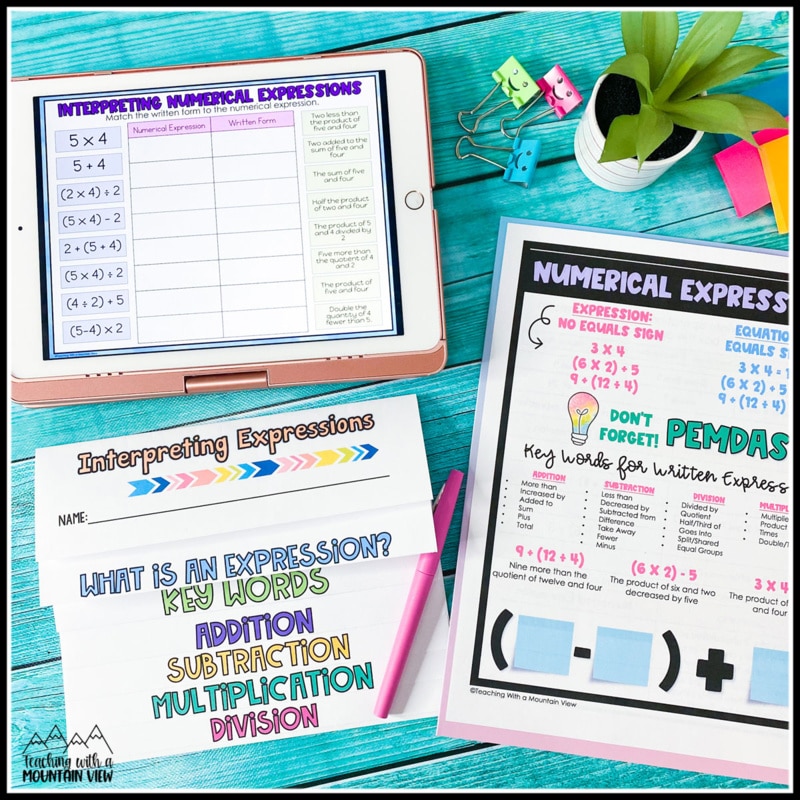
For extra practice, I have students complete these writing & interpreting expressions task cards. 16 cards require students to write expressions based on a statement and 16 cards require students to interpret expressions by writing a statement based on the expression. They’re perfect for pre or post-tests, math centers, homework, etc.
Interpreting Expressions FREE Sort Activity
Practice, practice, practice! It is so crucial for students to practice interacting with these expressions in so many different ways without the pressure of actually solving them, which they will do in 6th grade and beyond. Of course, there are plenty of opportunities for pencil/paper work, but I prefer to get my students to interact with these words and numbers.
I have created three different sorts for your students to use, one where students match the written form to the numerical expression, one where they read written word expressions and identify the key operation, and one where they match words and numbers to expressions.
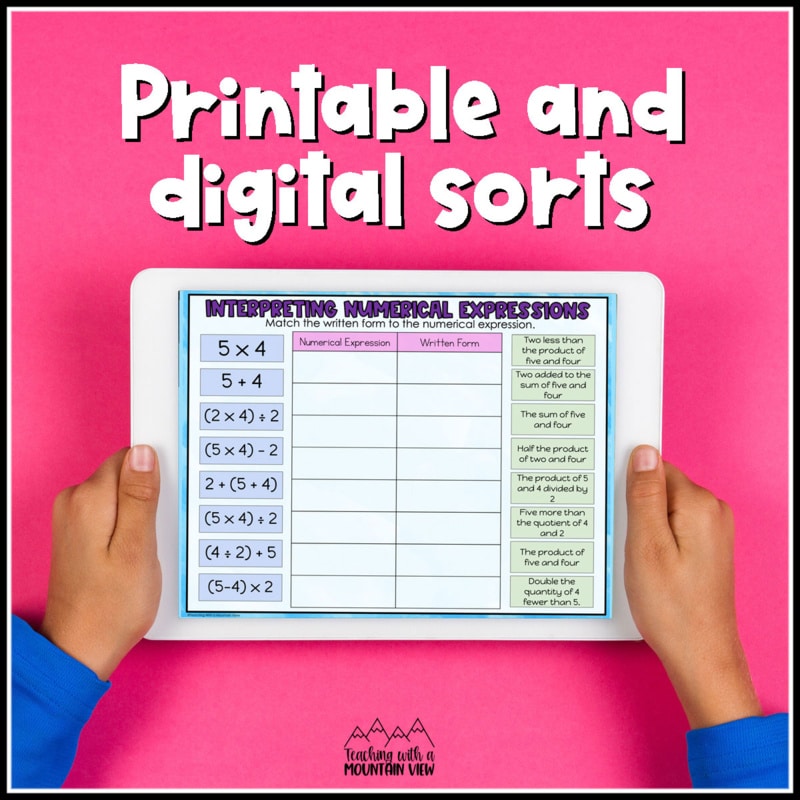
Again, there are so many opportunities for students to review expressions throughout the entire year, so this unit only lasts a few days for me. You can get creative! Use noodles as parenthesis and use pictures to represent story problems.
Download this FREE expressions bundle to help with your next expressions unit. It includes an anchor chart template, waterfall template including keyword lists and sample word problems, digital and printable sorts, and a short assessment/practice page.
Have fun!
Mary Montero
I’m so glad you are here. I’m a current gifted and talented teacher in a small town in Colorado, and I’ve been in education since 2009. My passion (other than my family and cookies) is for making teachers’ lives easier and classrooms more engaging.







